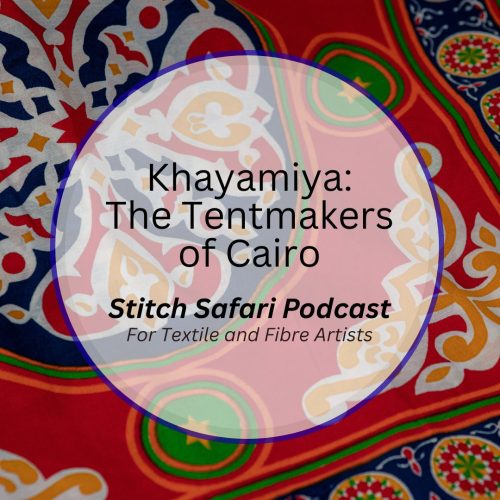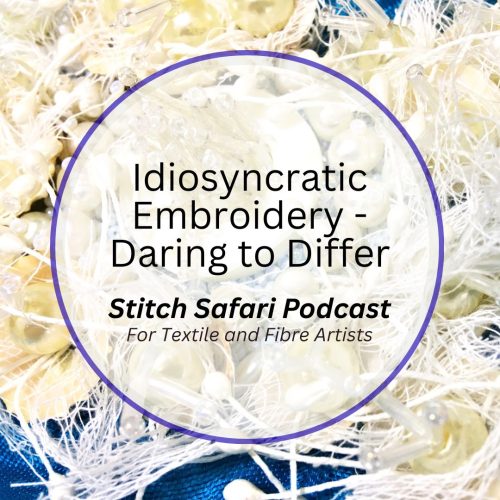East Asian Silk embroidery is a stunningly beautiful art form emerging from China – the ancient masters of sericulture – migrating to Korea, Vietnam, and Japan, with each adding their own cultural and stylistic design stamp to form this unmistakable aesthetic.
Silk was first produced in Neolithic China and would become one of the most highly sought-after commodities across the ancient world empires, eventually giving its name to the great trading network known as The Silk Road, connecting East Asia to Europe, India, and Africa.
Unsurprisingly then, silk embroidery in China dates back 5-6,000 years and as sericulture and weaving techniques improved, silk production became China’s foremost export.
Techniques in archeology have grown and improved and discoveries increased, leading to a greater depth of scholarship surrounding Asian textile and art history, furthering our knowledge and understanding of the traditions forming this elegant, exuberant, and highly influential, East Asian embroidery aesthetic.
And it’s surprising just how much has been uncovered and is known about East Asian embroidery,
The need to adorn our bodies and clothing is a basic human need, seen replicated across East Asia during Neolithic and Paleolithic times – body tattooing was a widespread practice often reflecting textile patterns.
Embroidery was used to communicate specific ideas, to distinguish groups or tribes, or simply for beautification through the careful application of stitched symbols or patterns using available materials – and for that, we need to turn to the impressive technical aesthetic accomplishments of the embroiderers.
Advancement in sericulture technology along with the development of implements provided fertile ground for the production of textiles and fibres to use in embroidery, but we also need to look to the creativity of these early embroiderers utilizing a simple needle and thread, responding to their personal and social instincts.
And this is where we see the migration and dissemination of techniques from China to neighboring Korea, Vietnam, and Japan, as well as the adoption of Chinese costume and rank insignia across these regions.
Early East Asian embroidery reveals an amazing depth of expressive freedom informed by their political, religious, historical, and social environments, resulting in works of great beauty.
A number of standard motifs existed, yet local environments and material availability certainly impacted how these were used, leading to a variety of different effects.
The technical development of the embroidered chain stitch, for instance, evidenced by work found in a 4th century BCE tomb, points to the mastery of these early embroiderers in China.
Garments and coverings from the tomb portray exquisitely wrought designs featuring birds, dragons, and plant motifs stitched in a variety of colourful curvilinear patterns clearly depicting chain stitch used as both an outline stitch and as a fill stitch – reflecting designs from literature from the same period.
These designs simply could not be replicated through weaving techniques of the time, whereas beautiful, expressive hand embroidery allowed the ultimate freedom of expression – and chain stitch was a perfect choice.
By the Warring States period 475-221 BC, embroiderers had learned to manipulate the simple chain stitch allowing them to create designs of exotic, flowing fantastical creatures. By the Han Dynasty 206 BC – 220 AD, there is an almost exclusive reliance on the sinuosity of chain stitched patterns producing drama, texture, and decorative impact in Chinese embroidery
Buddhism came to China during the late Han period, providing a bountiful stimulus to East Asian embroidery, and was quickly embraced by the Imperial Courts
But it was the Song Dynasty 960-1279 CE, where we see the flowering of textile arts in China and where embroidery reached unequaled heights in technical achievement and aesthetic appeal. It was also the period where chain stitch was replaced by smooth, flat surface stitches trying to emulate a more realistic visual expression.
Large spaces could be filled with long stitches, which could then be layered with detail stitches on top, allowing embroiderers scope to explore tonal techniques and perspective – aligning embroidery right alongside that of art.
Welcome embroidery painting. The Gu school signature was to use a combination of brush painting and fine needlework – sometimes making it difficult to visually distinguish either technique – they simply commingle.
And Chinese embroiderers from this time preferred to work with extremely fine, untwisted floss.
A world of innovation and possibilities opened for East Asian embroiderers also fostered by the importation of luxury textiles. Persian and Central Asian textile motifs were also adopted and adapted.
The Trade of silk and silk embroideries via the Han Chinese to the Korean peninsula influenced the development of Korean embroidery, allowing Korean women to express themselves within their strict Confucian restrictions.
Korean embroiderers, however, preferred to use a highly twisted thread – a hallmark of their work, resulting in a more textured and less glossy finish.
Japanese embroidery techniques were also influenced by China and Korea sometime during the 6th century, developing their very own, highly decorative aesthetic.
During a period of civil war during to Muromachi Period 1392-1568, Japanese textile artists had to experiment with cheaper, simpler surface decoration techniques such as tye-dyeing, resist-dyeing, embroidery, painting, stenciling, and the application of gold and silver leaf – many of which were used in combination.
The opening of Japan during the 19th century was a time of great change, and in 1976, Japanese embroidery became a Protected National Art.
Embroidery, in general, was worked by both men and women, by professional embroiderers in palaces or commercial workshops throughout East Asia, yet also remained as a proper skill for women and girls.
High-quality East Asian embroidery began to diminish during the 20th century. The fall of monarchies in China, Japan, Korea, and Vietnam, the adoption of Western fashion, the change of women’s roles in society, and even the decrease in living space, all changed the need for and ability to make embroidery.
Yet on so many levels, there are parallels to be seen with European embroidery in design and stitch development, the migration of technique and motif styles through trade, the change in the role of women, and the co-existence of embroidery alongside other art forms.
But the rich, graceful, elegant East Asian embroidery aesthetic, supported by its exotic and sublime use of colour and texture, lingers to inspire.
It is unique and without peer.





